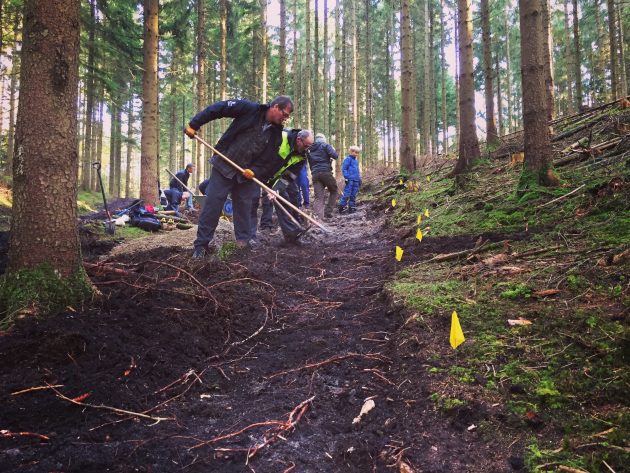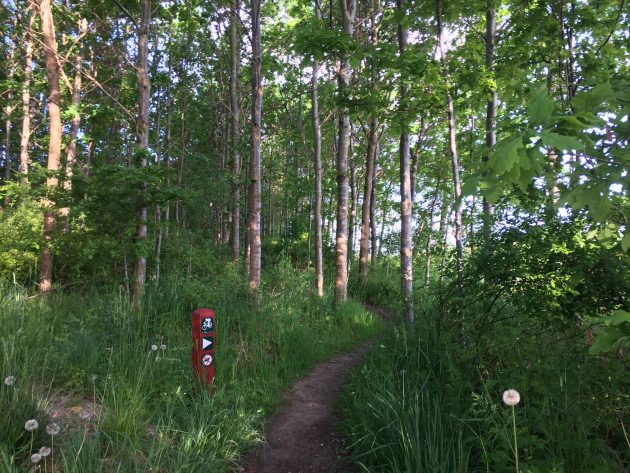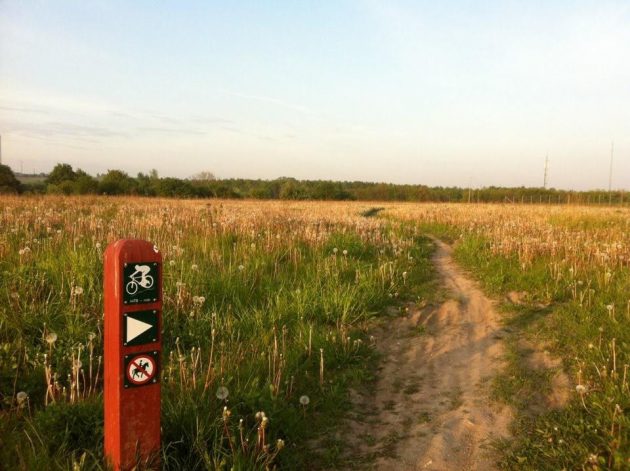Mountain Biking Denmark
Originally posted on September 28, 2018 at 0:01 amEditor’s note: Our latest print issue of Dirt Rag Magazine, The Road Trip Issue, just dropped in the mailboxes for subscribers and newsstands. Here’s an awesome write-up of mountain biking in Denmark to accompany the print issue. Interested in subscribing? Click here!

By Shawna Kenney
pamphlet translated by Shawna Kenney with help from Anja Klemp Vilgaard
photos of Shawna courtesy Shawna Kenney. All other photos courtesy Thomas Larsen Schmidt of the Danish Nature Agency
Only four out of ten Danes own a car, while nine out of 10 Danes own a bike, with most of the population cycling even through the long, dark winters, according to the Cycling Embassy of Denmark. Barring statistics, the country’s love for bicycles is obvious to any visitor. Still, mountain biking in Denmark may sound like an oxymoron, since the country has no mountains to speak of. Its terrain averages about 31 meters—100 feet—above sea level. But there are a few hills and plenty of places to get your ride on, thanks to government organizations like Naturstyrelsen (the Danish Nature Agency) and community groups working together. Thomas Larsen Schmidt, chairman of the Danish Bicycle Tourism Department, says the first official trail opened in 1999 just north of Copenhagen, and now the country boasts hundreds, as well as the ability to lay claim as the training ground of Annika Langvad, the reigning women’s cross-country World Champion.
I had ridden around the city of Copenhagen on a friend’s bike before (reminded by angry bells to stay to the right as commuters whizzed by) and I have taken a few coastal rides up to Kronberg (the castle featured in Shakespeare’s Hamlet) but I had yet to get off-road in this otherwise flat country. After just a 20-minute train ride from Copenhagen, I hopped off at Allerød Stationsvej, ready to ride a nearby 23-mile single track after Bike Dreams fitted this mountain biking novice/tourist with a suitable bike and helmet, as well as an experienced guide. (The shop no longer rents mountain bikes, by the way, but MTB Tours offers two shop locations for rental as well as information on rides throughout the region. Try anything from a two-hour tour on the northern Greenbelt to a 6-day road trip through Denmark and Sweden).

Soon I was ripping through a fairytale-like forest of moss-covered trees worthy of trolls, hobbits and tread. In the shade of old-growth trees, I traversed the gentle trail, hitting little berms, gliding through the flats, and gaining downhill momentum while remembering a friend’s advice from when we were riding back in Maryland to “give the horse its head.” I even cleared a narrow bridge of two-by-fours without wiping out—until my guide asked me to do it again on camera, when nerves and lack of speed landed me in the ditch below. Rookie mistake. No worries—the fall was cushioned by a soft bed of ferns. RIP to those sunglasses, though. (The video of me bailing has since been destroyed!)
This particular trail in Allerød is one of many—and not even one of the Top Peaks (10 Spir) rated by the Danish Nature Agency. Together ‘the 10 peaks’ offer more than 200 km of MTB routes in the national forests of Denmark with something for every level and interest. Their map is in Danish but the color-coded columns break down accordingly:
Blue means easy: good for the experienced cyclist on an MTB or ‘hybrid’: pretty easy but still with a few challenging passages. Most up and downhill parts are moderate, with possible short steep parts.
Red means intermediate: For the experienced MTB-rider on an MTB of good quality: Steeper and more difficult than the blue trail, often on single tracks and on dirt, gravel, rocks etc. There can be roots or holes on the path.
Black means difficult: For the very experienced MTB-rider on an MTB of good quality: Like the red trail but harder. Steeper. It’s challenging for both rider and equipment. There’ll be switchbacks or steep parts. This is for somebody in good shape.
Orange means ‘extreme’: For the very, very experienced MTB-rider on a bike built for downhill or free ride. Maximum security gear is needed– like a full-face helmet, back shield, neck support, knee patches, gloves and glasses. Often a very steep downhill path on gravel, rocks, dirt and built-in jumps and challenges. The entire trail is demanding and one should be in good shape to complete it.
On page two of the PDF, the first column shows the name of the route/forest area (corresponding with the map of Denmark and the red dots). The next column ‘Rutenavn’ means ‘route name’ but in layman’s terms, for example, the first one, ‘Klosterheden – Danmarks længste’ means ‘The forest area Klosterheden – Denmark’s longest’. The third column offers ‘length’ of the trails, the fourth, ‘Sværhedsgrader,’ indicates ‘level of difficulty’, the fifth, ‘Skønnet højdemetre,’ means ‘Approximate height estimation in meters,’ and the 6th is obviously ‘Singletrack.’ The last one is ‘Anslået tid,’ which estimates time on the track. ‘Timer’ translates to ‘hours.’
Other trails can be found in English by using the singletracker.dk app. With a little planning, visitors may now add mountain biking to their list of fun things to do in Denmark. As Larsen Schmidt says, “You don’t need mountains to mountainbike—you need trails, and Denmark has a lot of cool trails.”
